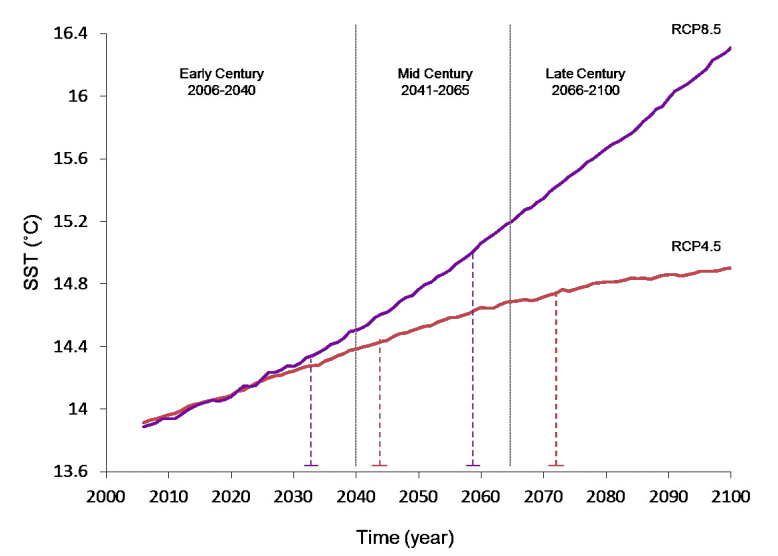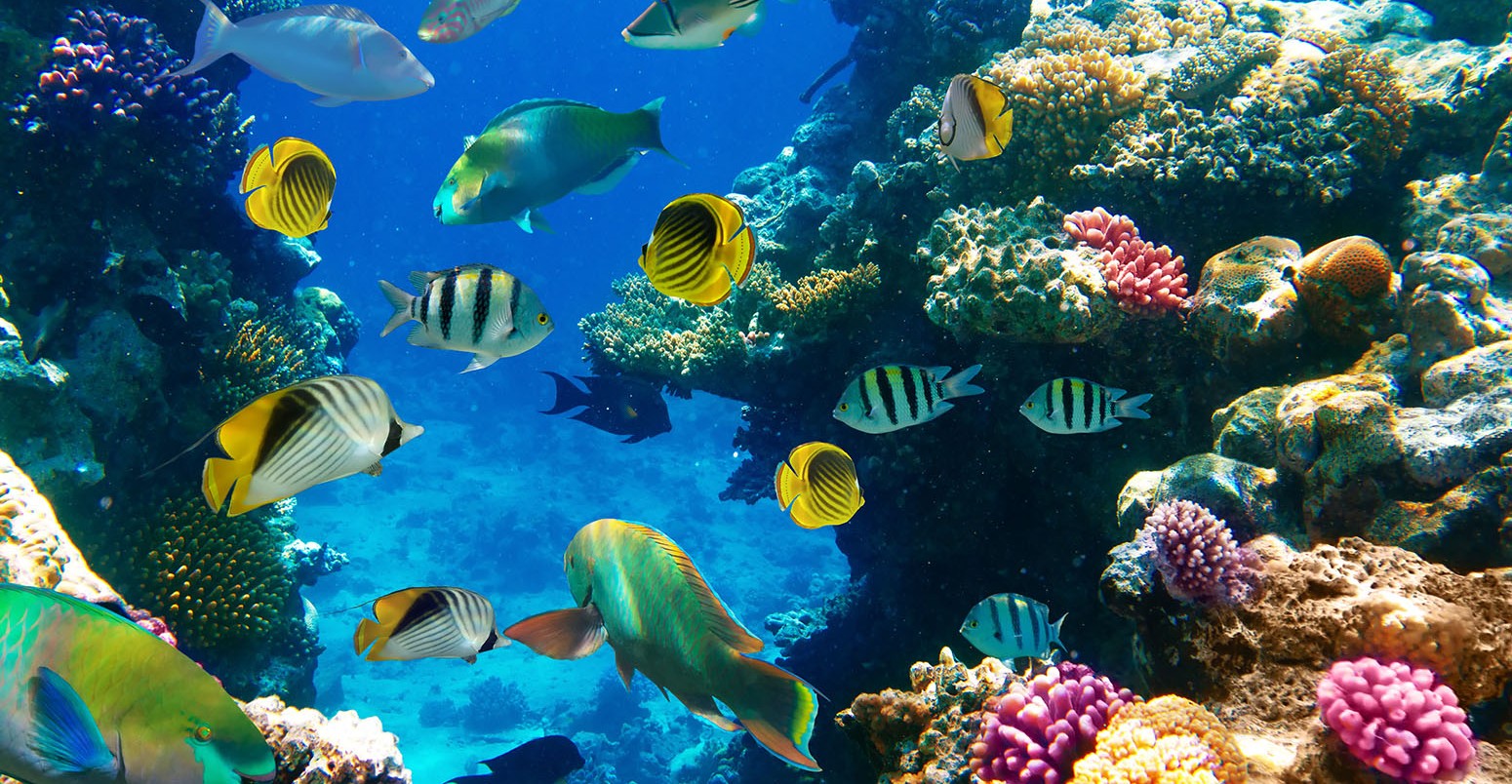Warming tropical oceans could see widespread and intense species loss, study warns
Robert McSweeney
08.31.15Robert McSweeney
31.08.2015 | 4:00pmThe tropics could see a huge drop in biodiversity as marine life heads for cooler waters, a new study suggests.
Rising sea temperatures could push fish, molluscs and crustaceans towards higher latitudes, the researchers find. But species that can’t move fast enough are likely to face local extinction if emissions remain very high, the lead author tells Carbon Brief.
Sea surface temperature
There are around 230,000 known species swimming, floating and crawling around the world’s oceans. A key factor in where they are located is the temperature of the water.
The map below shows the distribution of marine species around the world. You can see from the areas shaded yellow or red that there tends to be a larger number of species in warmer, tropical waters than in cooler waters towards the poles.

Current distribution of marine species in the world’s oceans (as of 2006). Orange and red areas show areas where number of species is high, while blue areas show areas where biodiversity is low. Graph on right-hand side shows number of species by latitude – where the further to the right the line is, the more species found. Source: García Molinos, et al. (2015).
But warming oceans may see marine life venturing away from their current habitats. A study from earlier this year, for example, found that warming waters in the Arctic could allow more species to bridge the chilly divide between the Atlantic and Pacific oceans and mix more easily.
The new study, published in Nature Climate Change, looks at how rising sea surface temperatures could affect how species are spread across the world’s oceans.
Researchers modelled the impact of future temperature change on around 13,000 marine species – over 12 times more than any other study.
Habitat range
The researchers first estimated what temperatures each species can tolerate – based on how cold and hot their existing habitats get and how far their existing ranges stretch.
The researchers then modelled how their habitat ranges could change as the oceans get warmer. Of the four pathways of future climate change developed for the Intergovernmental Panel on Climate Change (IPCC), the study uses two: a moderate scenario where global emissions level off around the middle of the century ( RCP4.5) and the scenario with the highest emissions of the four ( RCP8.5). Global emissions are currently tracking just above this scenario.
You can see what each could mean for sea surface temperatures in the graph below.

Projections of global average sea surface temperature for the 21st century, as an average of 20 global climate models, under a moderate emissions scenarios (RCP4.5, red line) and a very high emissions scenario (RCP8.5, purple line). Source: García Molinos, et al. (2015) Supplementary information.
The results suggest that as the oceans warm, the mid and high latitudes will become increasingly suitable for species that wouldn’t have previously strayed away from the tropics. These areas could see an increase in biodiversity by 2100, says lead author Dr Jorge García Molinos, from the Scottish Association of Marine Science in Scotland and the National Institute for Environmental Studies in Japan. He tells Carbon Brief:
But for the tropics, the results suggest a substantial drop in the number of marine species. This is partly down to marine life migrating away to cooler waters, but also because many species in the tropics have a narrow range of tolerance to different temperatures, the paper says. This means they have a low capacity to adapt to changing conditions, and if they aren’t able to migrate fast enough to keep pace with rising temperatures, they will likely become regionally extinct.
You can see these results in the maps below. The blue shading shows areas where the number of species is projected to decline, while the oranges and reds show those areas where biodiversity could increase. The largest decline in marine species is projected for the areas around the equator in the Indian and western Pacific oceans.

Redistribution of marine biodiversity patterns under RCP4.5 (top map) and RCP8.5 (bottom map). Orange and red areas show areas of higher future biodiversity, while blue areas show those of lower. Graphs on right-hand side show this change in biodiversity by latitude – where the line is to the left of centre, biodiversity is projected to decrease, and to the right of centre, it is projected to increase. Source: García Molinos, et al. (2015).
Unprecedented consequences
With habitats expanding from the tropics, many regions of the world could see their marine life becoming less distinct, Molinos says:
The prospect of marine species mingling more than ever before in recent history brings its own set of challenges, says Molinos. It could bring together new combinations of predators and prey and affect how productive the oceans are for the millions of people that rely on them, he says:
Intense and widespread losses
The study highlights how different the outcome for marine species could be depending on whether humans follow a moderate or very high emission scenario, Molinos notes.
If global emissions level off by the middle of the century, the net losses in species are relatively low, but, if not, these losses are expected to be “much more intense and widespread”, the paper says.
The research draws a similar conclusion to a recent study by Dr Gregory Beaugrand at the University of Lille Laboratory of Oceanography and Geoscience, and Dr Richard Kirby at the Marine Biological Association of the UK. They tell Carbon Brief:
But there’s still time to act, Molinos concludes:
Main image: Coral colony on a reef in Egypt.
GarcÃa Molinos, J. et al. (2015) Climate velocity and the future global redistribution of marine biodiversity, Nature Climate Change, doi:10.1038/nclimate2769
-
The tropics could see a huge drop in biodiversity as marine life heads for cooler waters, a new study suggests


